What are heat and energy recovery ventilators (HRVs and ERVs)?
How do heat and energy recovery ventilators work?
Because the houses are sealed, the air is laden with moisture and pollutants created from the daily activities of its inhabitants. The installation of heat or energy recovery ventilator (HRV or ERV) inside the house will remove stale and polluted air from the house to the outside and replace it by an equivalence of fresh air. Generally, an HRV or ERV system installed properly will renew the air of all the important parts of the house.
How? Through a ductwork system installed in the walls; those ducts ending with fresh air distribution grilles and stale air exhaust grilles. Fresh air distribution grilles are in each room of the house needing fresh air (which are, among others, bedrooms, kitchen and living room). The stale-air-to-outside grilles are generally located at the highest level of the house, where the excess humidity and pollutants build-up.
The fresh air distribution and stale air exhaust ducts are connected to the HRV or ERV. To other ducts are also connected to the unit: one for gathering fresh air from outside and the other one to exhaust the stale air to outside. The HRV or ERV manage the ventilation for the whole house.
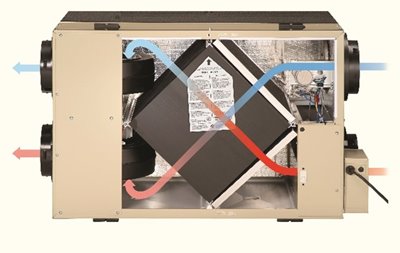
Ventilation and filtration for a better quality of life!
Good ventilation can renew the air of the house at a controlled rate. The filtration of this air will allow to significantly reduce the presence of pollutants and thereby reduce the risk of disease.
The maintenance of the filtration system remains the guarantee of proper operation and optimization of the HRV or ERV system.
Equalizing Indoor Air Pressure
If an HRV or ERV unit does not expel and intake equal amounts of air, a negative or positive air pressure imbalance occurs. It is important not to neglect the impact of an unbalanced ventilation system.
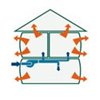 Positive air pressure
Positive air pressure
-
Pushes hot and/or humid air into walls and insulation; condensation can lead to mold, mildew, and rot
-
Heat loss.
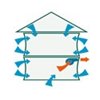
Negative air pressure
-
Infiltration of unconditioned air increases risks of mold and higher energy costs
-
Potential backdraft from combustion appliances
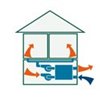
Equal air pressure
-
Supply airflow is equal (CFM) to stale air exhaust
-
Balancing is required on all units unless specified otherwise
Before choosing an HRV or ERV model, there are a few things homeowners and builders must consider, such as the importance of maintaining neutral indoor air pressure and how climate plays a crucial role in determining which type of unit will provide the most benefit to a home’s indoor air environment.
What are the possible types of installations?
Any Broan, Venmar and vänEE unit can be installed with multiple air intake and air exhaust grilles that bring exceptional ventilation into every room. They can be easily integrated with an existing forced-air system or can be installed independently using the fully ducted system installation.
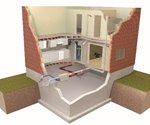 Fully Ducted System
Fully Ducted System
Primarily for homes with radiant flooring, hot water or electric baseboard heating. This fully ducted system is effective because unit captures pollutants at the source and distributes fresh air to living areas.
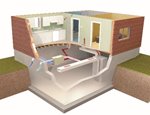 Exhaust Ducted System
Exhaust Ducted System
For homes with forced air heating systems or air handlers (furnace). This exhaust ducted system is effective because unit captures pollutants at the source.
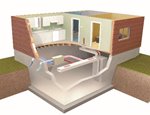 Simplified system
Simplified system
For homes with forced air heating systems or air handlers (furnace). This simplified system is easy to install as unit uses existing furnace or air handler ducting.
You can also refer to the installation manuals of our products for more information.

 English
English
 English
English